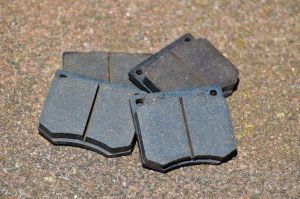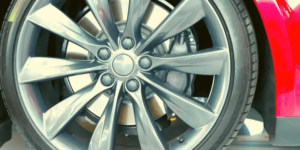While traveling at high speeds, it’s common to have to brake hard to slow down your car or avoid a collision. It’s then that many people notice a vibration or shake from the pedals or steering wheel that isn’t there until you brake hard.
Brake shudder or judder when braking can indicate multiple problems.
- Brake pads and rotors worn
- Suspension failure,
- The steering rack has gone bad
- Tire balancing or wheel alignment
This article will look at the most common reasons and the solutions and costs of repair.
Braking System
Most often, it’s the braking system that’s the culprit. With its intricacies involving parts that operate under pressure and friction, there are many points of failure. Bad brakes can cause shaking, ranging from mild to violent, and should never be left unchecked.
Brake Rotors
Most modern vehicles rely on disc brakes – drum brakes are becoming obsolete. These operate via rotors that are part of each wheel. Braking causes pads – assisted by calipers to clamp down on them and halt the wheel, thus slowing the car down.
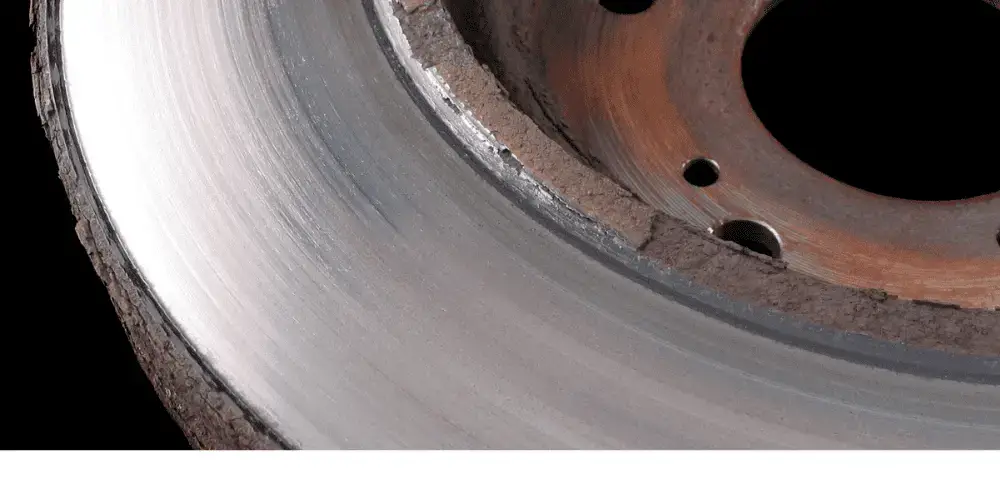
Natural wear will eventually affect the rotors, or excessive heat buildup (due to frequent inclines journeys in mountainous states) will cause them to warp prematurely. These factors can loosen the contact between the pads and rotors, resulting in a shaking bouncy feeling from the steering wheel each time the brake is applied.
Another cause of warped rotors is leaving vehicles undriven for extended periods. The rotor tends to rust or collect grime, making it uneven and having a similar effect to if it was made uneven by wear and tear.
Solution
While a car shop can adjust and resurface the rotors to repair the unevenness, you should get them replaced instead unless the rotors are very new with little mileage on them. Anyone who knows their way around a car can do it themselves, following simple DIY guides.
It’s important to remember to replace both rotors when you do, as replacing only one can’t fully compensate for the unequal wear they might have been subjected to.
Cost: $150 – $300 per pair of rotors (including labor)
Brake Pads
Brake pads are held in place by calipers. The distance between the pads and rotors must be exact to function properly.

Each wheel has a pair of them (for disc brakes) surrounding the rotor. When the brakes are applied, the pads squeeze and grip the rotor to slow down the car.
If these pads are contaminated with oil or dirt, or if they’ve worn out too much, you can expect that they will also cause a brake shudder each time you brake.
Solution
The best idea is, again, is a replacement. Because they generate so much friction and are prone to wear and tear, you should never risk using old pads once their service life is over.
Cost: $100 – $300 per brake pad
Sticky Calipers
Calipers should return to their resting position once your foot is removed from the brake pedal.
If they don’t, you have a case of what’s known as “sticky calipers.” Not fully separating but remaining slightly touching the rotor means you’re driving effectively with the brakes slightly applied.
The main reasons behind this are worn-out hoses and the buildup of debris. It can also be a result of a component installation done poorly. Besides the calipers themselves, guide pins – an important part- can cause problems if they’re too dry.
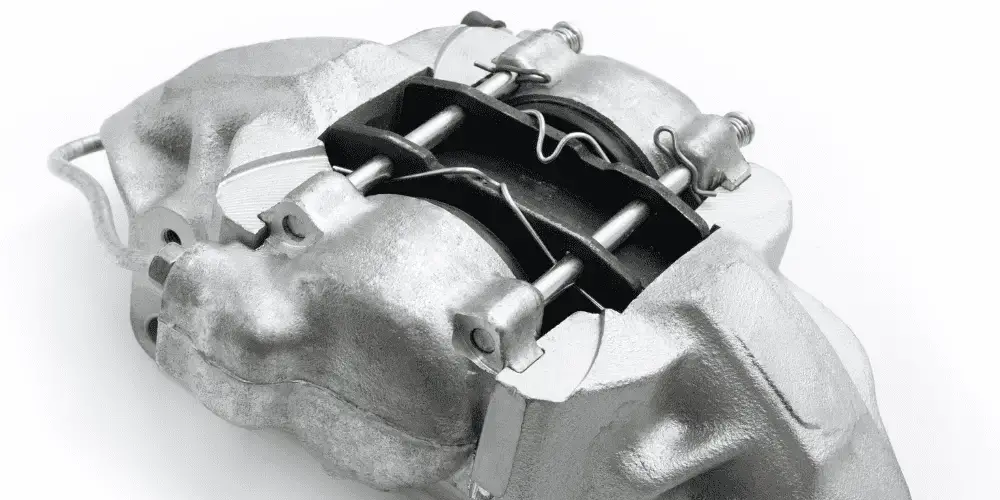
Solution
For the best diagnosis, it’s best to consult a mechanic. If the problem is extensive, you’ll need to have them replaced, either once or multiple. You should also keep the rotors and pads clean, so no debris builds up in the contacts between them and the calipers.
Cost: $85 to $110 per caliper
Wheel Alignment and Tires Balancing
Another common cause is bad alignment and worn-out tires, where the first can end up causing the second. If braking on turns causes a shudder, and you notice that your car shakes even without braking, you have a case of misalignment. You’ll also notice that the brake pedal vibrates when pressed.
This may also show itself in unevenly worn-out tires and decreased fuel economy. However, if your alignment is fine but the tires are too worn out, you’ll still get a shudder when you break.
Driving through too many potholes can also cause the rim to be bent or misaligned. This usually causes steering wheel vibrations that increase as you speed up.

Solution
For the tires, a simple replacement is in order. Replacing one or both pairs will easily do the job. However, if the wearing is caused by misalignment, that must be solved first.
A re-alignment job is just a bit too complicated for DIY solutions since any minor miscalculation on your part will eventually make the alignment worse. It’s best to visit a trusted mechanic who will do a better job using computer-assisted equipment.
Cost: $100 – $200 (for all four wheels; depending on make and model)
Overtightening Lug Nuts
Some car owners use air-operated or pneumatic wrenches for tightening when replacing their tires. It’s far better to use a torque wrench and the owner’s manual for your vehicle so that you don’t under or over-tighten them.
Suspension
The suspension is another vital component of your vehicle that helps handle the unevenness of roads and potholes. It has many composite parts (tie rods, ball joints, wheel bearings, etc.), a problem with any of which will cause the issue we’ve been discussing.
Characteristic of this will be the car’s shaking during normal driving and specifically when it brakes.
Another part integral to the suspension and one that can sometimes become damaged (and cause the same problem) is the axle. A clunking sound may also accompany any shaking you feel when braking and if the axle has snapped or is severely damaged, the car may not move.
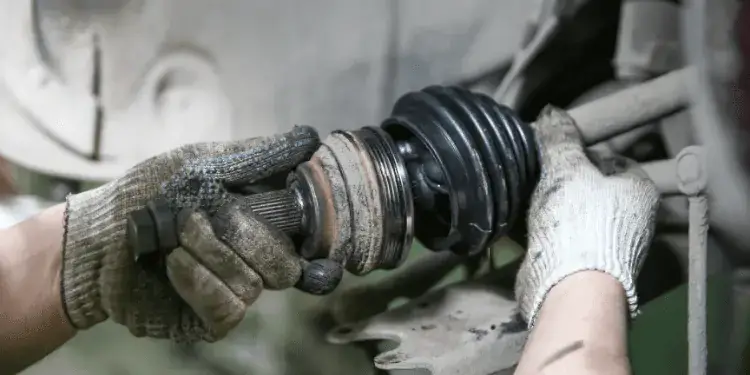
Connected to the axle is a small Constant Velocity (CV) joint. Debris or damage affecting the boots that hold and protect this joint can cause damage and subsequently cause shaking. It’s also wise to remember that any damage to the axle will usually affect this joint.
Solution
Depending on which part is damaged, cases of minor damage will do with the repair of the component. For extensive damage, the target part will likely be entirely replaced.
Cost: $100 – $200 on average, with wheel bearings costing more depending on the make and model.
Many visitors read this article next: CV Boot Replacement Without Removing Axle – Help & Advice
Steering
Components in modern power steering systems must work properly to ensure a smooth ride. A fault somewhere in this system can give a host of symptoms which, along with the shudder, shows that the problem lies in the steering components:
- The shaking occurs only when steering to one side and not the other
- It increases when you turn
- While stationary, turning the steering will still cause a shudder

This scenario can quickly devolve into violent shaking of the steering wheels and can be very dangerous if you’re on the road.
Solution
The best solution is to get the vehicle inspected by a qualified mechanic. The steering system is quite complicated, and only sound technical expertise will ensure that any outstanding issues are solved. Trying to fix it yourself is not recommended.
In Conclusion
A warped or damaged rotor in a car with disc brakes is most likely to be the source of shaking. Normal wear and tear may cause warping. The rotor surface in the contact region will deteriorate over time due to the repetitive application of the brake pad to the rotor.





